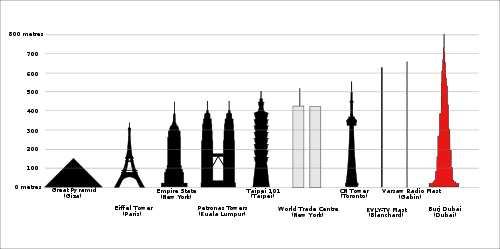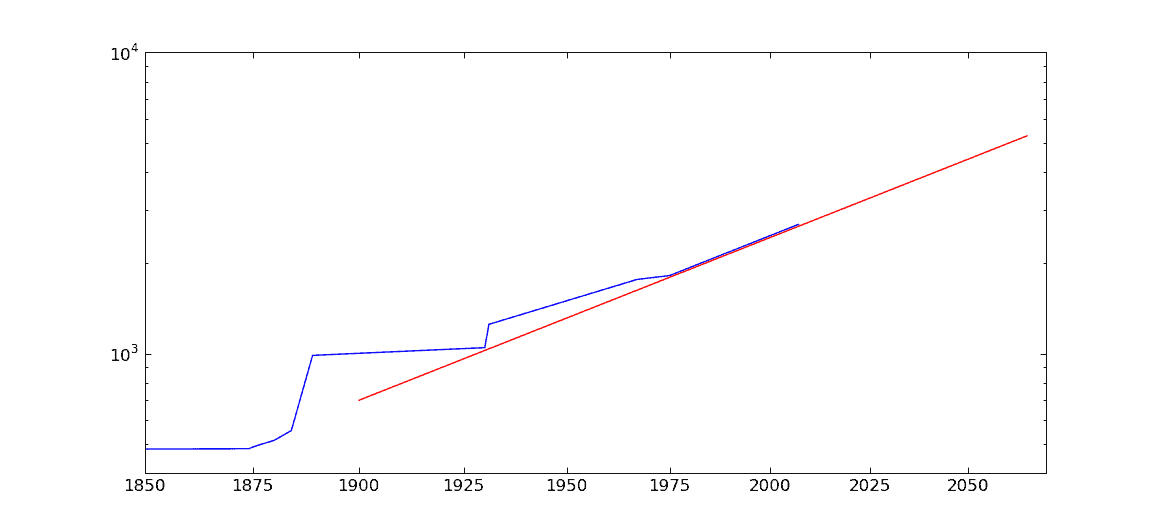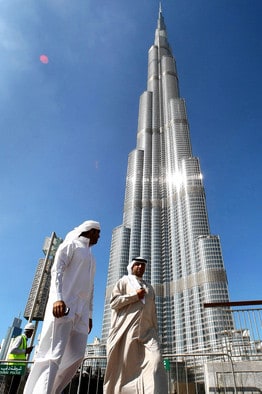
The Burj Dubai opens today. It’s the worlds tallest building at about half a mile high.
Except for being only half as high, it resembles Frank Lloyd Wright’s mile-high tower in overall shape — but of course the Burj is real. From what I can tell, it could not only house but form the complete social and economic infrastructure for at least 5000 people. In luxury. Scale it up to a mile and you’re talking 40,000.
Given its elegant shape, the Burj has an incredibly tiny footprint (the foundation slab, not the surrounding plaza) of less than two acres. It seems reasonable to imagine that one could build a mile-high with a 5-acre footprint. Put only one of these per square mile — it takes up less than 1% of that area, so the land is left pretty much untouched — and you can put the current population of the Earth in about the area of Montana.
Give people flying cars and/or underground high-speed trains to get from one tower to another, and you can really turn the whole Earth into a park.
But you have to be able to do a lot of high tech building, and the people have to be pretty wealthy. Building a world full of mile-high towers would strain the world’s supply of steel and concrete significantly. What could nanotech do to bring this closer to reality?
Some years back I suggested that a good X-prize for nanotech would be to build a tower ten miles high. The reason was that you’d have to come up with a working manufacturing method to make the material, nanotubes and diamond probably, cheaply. You could build a 10-mile tower with current composites and/or aircraft alloys but it’d be way too expensive to be worth it.
The Burj Dubai used a recent advance, the ability to make concrete at higher strengths than before. Use of polycrystalline diamond in that role would enable much higher towers. When can we expect mile-high, or ten-mile-high, towers?

The surge in building heights coincided with the industrial revolution and the use of steel in building, as exemplified by the Eiffel Tower. Here are tallest buildings on a semi-log scale:

The blue line is tallest building (height in feet), the red is an eyeball-fitted trendline. This puts the tallest building at a mile in about 2065. However, all the structures in this trend are steel-and-concrete, and so, even though they follow an exponential curve, a shift into nanomanufacturing and materials could easily kick the curve into a different mode. We could even see a major jump, like the Eiffel in 1889, if someone took the new capabilities and set out specifically to build a structure just to be impressive.
